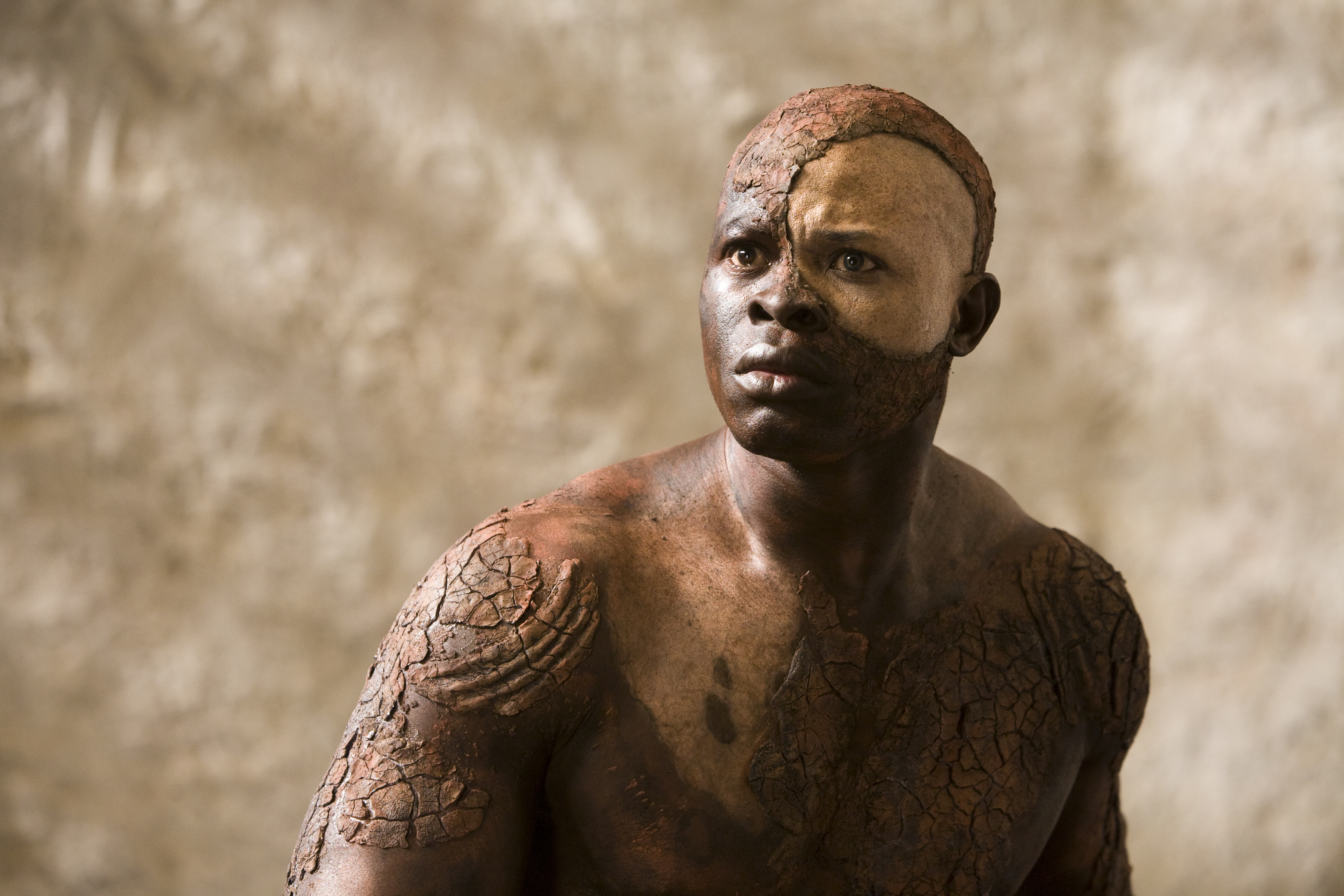
Djimon Hounsou as Caliban. The Tempest, 2010, directed by Julie Taymor
— The rage of Caliban at not seeing his face in a mirror, he said. If Wilde were only alive to see you!
Drawing back and pointing, Stephen said with bitterness:
— It is a symbol of Irish art. The cracked lookingglass of a servant.
The Stephen Dedalus character, Joyce’s youthful alter-ego, adds a new dimension to Wilde’s metaphor. By focusing on the condition of the looking glass, Joyce suggests the artist does not start his work with a clean slate. Rather there is considerable baggage he or she must overcome. This baggage might include colonial conditions or biased assumptions. Form and context influence content.
Joyce’s “cracked mirror” reminds me of Flaubert’s “cracked drum.” Joyce was influenced by French novelist Gustave Flaubert, inventor of Madame Bovary. Flaubert is famous for his nuanced style and cool distance from characters, whose flaws play out without pity or remark. However Flaubert once broke this glacier demeanour by commenting abruptly in the midst of a story: “Language is a cracked kettle on which we beat out tunes for bears to dance to, while all the time we long to move the stars to pity.”

Oscar Wilde cartoon by Raine Szramski

